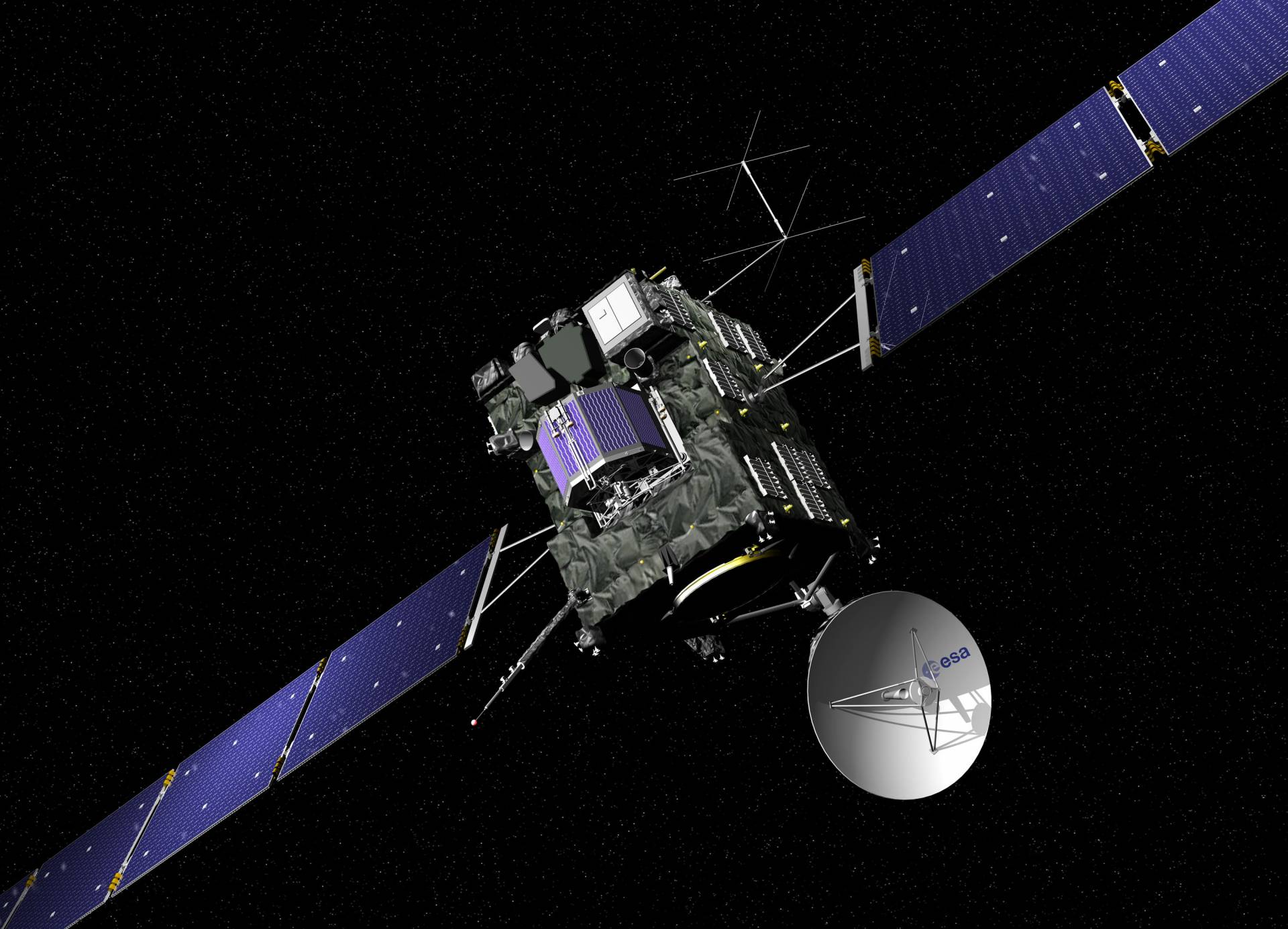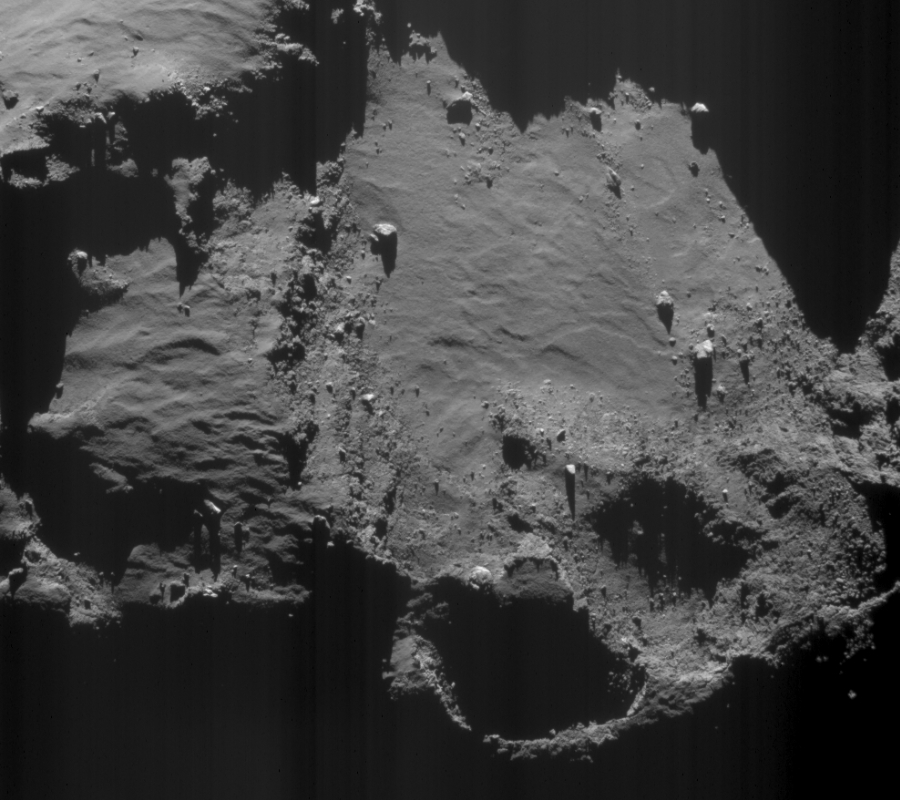The European Space Agency (ESA) announced on Thursday the death of Rosetta, the historic space probe that followed Comet 67P for two years as it studied its structure and chemistry.
ESA’s Operations Center located in Darmstadt, Germany was in charge of seeing Rosetta’s last hours as it was driven to an induced death toward the large and rocky comet. Rosetta’s death was slow but imminent, descending 19 Km into the surface of comet 67p/Chryumov-Gerasimenko at a slow pace of less than a meter per second. ESA researchers announced they received the probe’s last radio signal at 7:19 a.m Eastern time.

ESA researchers didn’t have access to the probe’s cameras as it fell towards the comet. However, they informed the probe bounced twice into the dusty surface before it emitted its last signal.
The Rosetta mission has been active since it first started its journey toward Comet 67P. The space probe took ten years to travel from Earth to the rocky comet located 335 million miles from our sun. After its arrival in 2014, Rosetta became the comet’s companion for two years.
However, ESA researchers had to make the decision of crashing Rosetta against Comet 67P to study its surface from a closer perspective.
“This is it, I can announce the full success of this historic descent of Rosetta toward 67P, and I declare the primary mission operations ended for Rosetta,” said Patrick Martin, ESA’s mission manager to the NY Times.
Sacrificing the probe for knowledge
For the last decades, scientists and researchers have been focused on understanding just how we as species came to be and that answer seems to be in outer space. With rockets and probes, the science world aims to obtain that response sooner than later.
Studying comets might be one of the first steps into understanding our beginnings, researchers believe that in these rocky surfaces lay the secrets to understanding human life and Earth as we know it.

Rosetta might not be the first probe to analyze a comet, but it has made history as the first machine to understand one in depth. Rosetta accompanied and studied Comet 67P as it traveled from a cold spot in our universe toward our Sun.
When Rosetta started its journey, Comet 67P had frozen ices all over its surface, which made it harder for researchers to understand its structure and components. However, as it traveled the universe it became warmer, and the icy surface began to melt.
The primary objective of researchers with the Rosetta mission was to evaluate trapped molecules inside what they have dubbed “dinosaur eggs” which are lumps located on the comet’s surface that have been preserved for thousands of years and could contain molecules and the building blocks of Earth as we know it.
The probe was equipped with eleven instruments specially designed to understand and evaluate the comet’s surface, analyze its cloud gasses and dust and understand the interaction it had with the solar wind.
On November 2014, Rosetta released a traveling investigator known as the “Philae lander” toward the comet’s surface to take samples and collect data for researchers so they could understand and analyze the comet’s soil.
Researchers calculate that Rosetta took over 100,000 images of the comet’s surface over the course of the mission. The team still has to filter all the collected data.
“It’s been a tremendously successful mission, our plan was to rendezvous with the comet far from the sun and then watch its activity grow and die back down, and that’s exactly what happened,”
Despite its functionality, researchers had to make the decision of crashing Rosetta, since the comet’s traveling course was going to be far away from our Sun and the probe’s solar panels, with which it obtains energy, wouldn’t work and it would become obsolete.
Instead of leading the probe to a slow death into outer space, researchers decided to make the best out of the situation and examine Comet 67P in a much closer way as they crashed Rosetta toward the surface of the comet.
“It’s like one of those 60s rock bands; we don’t want to have a rubbish comeback tour. We’d rather go out now in true rock’n’roll style,” said Matt Taylor, ESA’s project scientist to BBC News.
Source: European Space Agency
